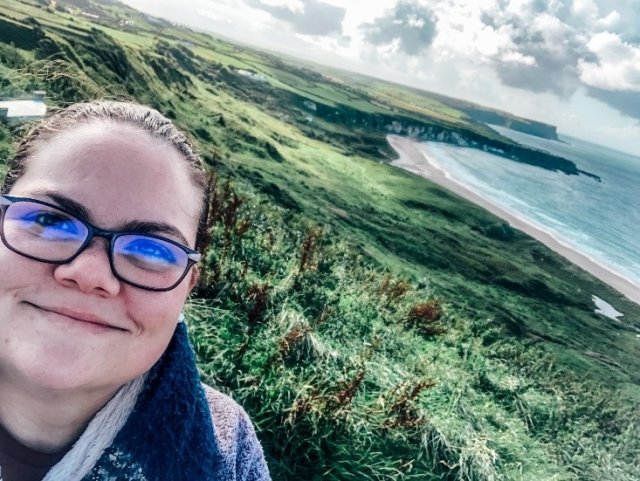Meet EPA Chemist Lisandra Santiago-Delgado Trine

EPA chemist Lisandra Santiago-Delgado Trine analyzes water samples from across the nation to study how certain elements move through environmental systems.
What brought you to EPA?
I wanted to pursue a career where my science made an impact on stakeholder’s needs and helped solve real-world problems. My time as a student and a faculty research assistant at Oregon State University taught me a lot about how chemistry can be used to help solve contamination issues at Superfund sites, but especially how important the relationship is between researchers and stakeholders (communities, industry, and government). Working at the EPA provides me the opportunity to expand on those relationships, as well as learn new and exciting analytical techniques to address the nation’s environmental issues.
Tell us about your background.
I started college as a Physics major because I wanted to be a space scientist, but then I took an Analytical Chemistry class, and everything changed. I was in awe of using quantitative methods and all the instrumentation I got to explore. That is why I obtained a bachelor’s degree in Chemistry from Universidad de Puerto Rico – Recinto de Mayagüez in 2013. In 2017, I completed my master’s in Chemistry and Toxicology as part of the Superfund Research Program at Oregon State University, which is an interdisciplinary training and research program managed by the National Institute of Environmental Health Sciences (NIEHS). As part of this program, I was awarded the K.C. Donnelly Externship Award where I had the opportunity of working with EPA hydrologist Eva Davis in Ada, OK, further studying steam-enhanced extraction as a soil remediation technique at Superfund sites and the formation of potentially more toxic products after remediation. After graduation I worked as a faculty research assistant and laboratory manager where I oversaw a variety of research projects awarded by NIEHS and the Department of Defense’s Environmental Research Programs.
What kind of work do you do at EPA?
I’m a chemist in EPA’s Integrated Stable Isotope Research Facility (ISIRF). Stable isotopes are non-radioactive atoms of the same element that differ in their number of neutrons, and scientists can use the ratio of stable isotopes to study how certain elements move through environmental systems. ISIRF conducts stable isotope analysis using laser and mass spectrometry. We receive water samples from across the nation as part of the National Aquatic Resource Surveys (NARS), and samples from local place-based research addressing nitrate contamination issues in groundwater and surface water. I work with these samples from beginning to end (preparing samples, acquiring data, and analyzing data) and with the instrumentation in our laboratory performing maintenance, quality assurance and quality control, and troubleshooting. Learning about stable isotopes and how they are applied in EPA research has been an exciting new direction for me.

How does your science matter?
The stable isotope measurements and data we produce at ISIRF are used in EPA research that aims to reduce pollution in the nation’s water by protecting the quantity and quality of water within USA. More specifically, we analyze stable isotopes on samples obtained from the NARS surveys which assess the condition of the nation’s waters as guided under the Clean Water Act. For example, some isotopic values have been used to assess possible sources and processing of total nitrogen found in lakes, rivers, and streams across the nation.
When did you first know you wanted to be a scientist?
I cannot think of the exact time or moment. I was privileged to be exposed to science from a young age, with many family members who are scientists, so it seemed like an innate part of me to be a scientist one day.
If you weren’t a scientist, what would you be doing?
Most likely you would find me teaching science to middle school students. Exploring with them the wonders of science and all the possibilities within.
What do you enjoy doing outside of work?
Exploring all the beauties of the Pacific Northwest and traveling around the world with my husband. Spending time with my dog in the hammock. And on the weekends, you will find me working with middle schoolers at our church.
What is something you wish more people knew about Hispanic heritage?
That Hispanic heritage is more than just one country and one month. That our communities around the world celebrate Hispanic heritage every day by living our cultures, traditions, speaking Spanish, eating traditional dishes, and remembering our ancestors.
What would your advice be to a Hispanic student interested in a career in science?
Mentorship and networking are key; make sure to connect with those who inspire you, and even work with them if possible. Apply for summer research opportunities in areas that are out of your comfort zone and explore all areas of science.
What is something about your heritage or culture that gives you pride?
The resilience and the toughness that characterizes us. And not only from Puerto Ricans, but from all Hispanic communities. I cannot explain in words how proud I am every time I learn about Hispanics who have overcome a difficult situation that was made worst due to circumstances related to our heritage.
Editor's Note: The opinions expressed herein are those of the researcher alone. EPA does not endorse the opinions or positions expressed.
